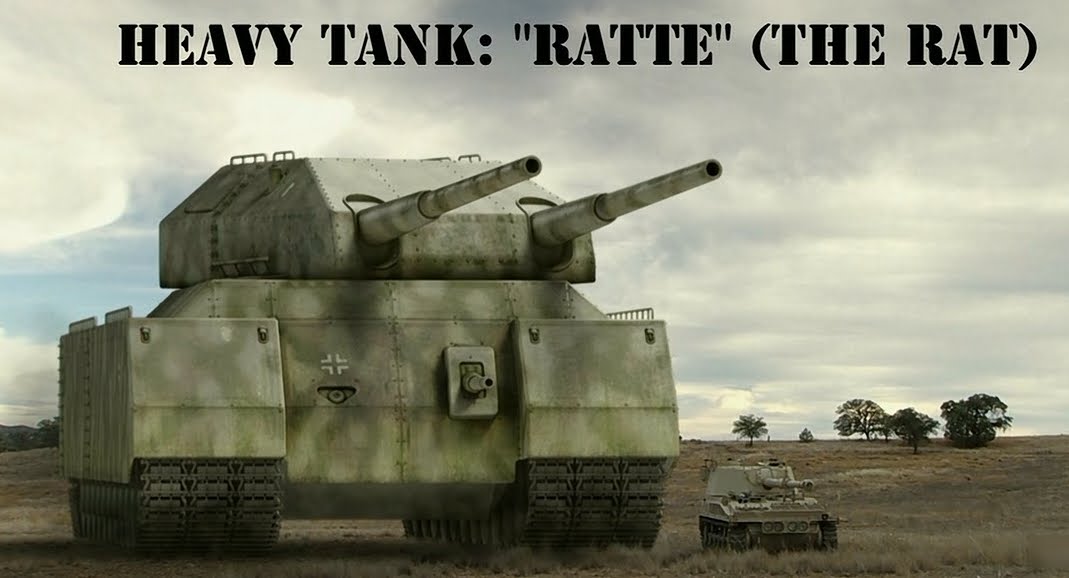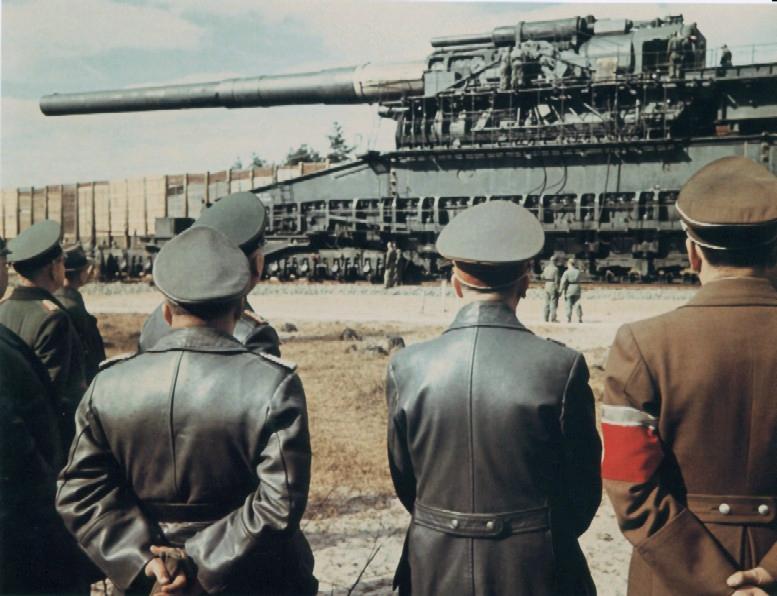 Maverick01, on 21 May 2013 - 07:30 PM, said:
Maverick01, on 21 May 2013 - 07:30 PM, said:
Autocannons range in caliber from 30 mm up to 203 mm.
The main armament on that thing is 800 mm (what is that an AC/100?)!
That's dismissing the likely difference in kinetic power (as influenced by the propellant type) and shell interior plus material, though. Caliber isn't everything.
The history of war has been dominated by a constant race between the penetration of weapons and the protection of armor. Gun gets invented, armor to stop or soften its projectiles gets invented, better gun gets invented, better armor gets invented ... if caliber would be everything that matters, today's tanks would be unable to actually harm each other because they'd need weapons they cannot carry. For a relatively recent example, the Abrams tank was considered "invincible" against infantry RPGs - until the Soviets deployed the RPG-29 with a tandem charge. The RPG-29 isn't larger, it just uses advanced technology and more complicated workings to overcome the protection of its target. The same applies to tank and artillery shells. Those WW2 cannons surely did not have
depleted uranium penetrators, for example.
Or, to look at Battletech, take the background of the BattleMech Rifle weapon that Sephlock-san linked. This weapon is, in terms of size, comparable to an Autocannon. Yet it lacks the same sophistication and so incurs a -3 penalty to damage when used against 'Mech armor, which leads to the Light version (which is still described as being larger than the tank guns of old) causing no damage at all. All this whilst the Rifle is still more modern and powerful than contemporary tank weapons. What do you think would the penalty be for an ancient WW2 era shell that is millennia behind "contemporary" armor technology, from a 3050s point of view?
From TechManual page 33:
Standard BattleMech armor consists of multiple layers. Only two of these layers are armor in the truest sense - the other two layers play supporting roles:
The outer layer of armor is an extremely strong, extremely hard iron alloy - a steel. It is intended to fragment projectiles and/or ablate protectively in the face of energy attacks. The grains of steel, that is, its crystals, are carefully aligned for maximum strength and radiation-treated to further hardness and strength. Though phenomenally strong and hard, the steel pays for these properties by being quite brittle. In fact, the steel is brittle enough that the second layer of armor that backs the steel is a ceramic, cubic boron nitride.
The point of the boron nitride layer is to act as a catcher's mitt for the fragments and plasma of the steel. Another very strong, very hard material with a brittleness problem, boron nitride is carefully processed to avoid any porosity and incorporates an additional web of artificial diamond fibers to make the ceramic a fine backstop for the steel outer layer.
The next layer below the boron nitride is a titanium alloy honeycomb. The honeycomb provides no armor protection per se, but is instead used to support the armor layers. The first and second armor layers are very thin - in terms of millimeters and centimeters - because 'Mechs have a lot of surface area to cover with only a proportionally light quantity of armor. Because this tends to make armor surprisingly thin for its length and width, much like a large pane of glass, the titanium honeycomb keeps the armor in place and prevents it from flexing too much under stress.
Finally, there's a polymer sealant layer. Because the armor is configured into multiple, separately replacable panels, this sealant is needed to keep the 'Mech air- and water-tight. The polymers chosen for the rule usually have some self-sealing capability, enough to handle small punctures and gaps. Though this pales in comparison to the Clan HarJel system, it is this layer that allows BattleMechs to operate underwater and in vacuum.
Additionally, armor over the actuators can be a wide range of protective materials, from ballistic/ablative fabrics to carefully articulated plates of standard armor. Cockpit canopies use a wide range of transparent armor combinations, with anything from ferroglass to alternating diamond and polymer sheets.
On a sidenote - ablative armor is a concept that wasn't even around during WW2, first introduced around the 1970s by the Soviets, and the increase in armor protection above conventional plating was obvious enough to lead to widespread usage amongst modern military forces across the globe.
 Maverick01, on 21 May 2013 - 07:30 PM, said:
Maverick01, on 21 May 2013 - 07:30 PM, said:
Autocannons range in caliber from 30 mm up to 203 mm.
There are larger ones, actually. ER3052 mentions a 300mm AC20, for example.
I'm not sure regarding the upper limit, although I would agree that it likely wouldn't approach 800mm due to the "hard cap" on 200kg ordonance weight ... unless we assume that the soft classification goes beyond the 10 second span by also counting heavier/larger projectiles that just take longer to fire, such as an AC that fires 400kg rounds, but only one per 20 seconds.
If I did not miscalculate, the Schwerer Gustav would actually be classified as an AC5 as its firepower is equivalent to about ~40 kg per 10 seconds. Obviously, the AC classification system was not intended to include uberheavy guns that take more than half an hour to reload ...

But all that doesn't mean much, anyways. Size and weight are just two out of four factors that are important for how well a projectile will penetrate and how much damage it will cause - the others being velocity (Gauss Rifle!) and hardness. Not counting potential further increases via technological "tricks" such as aforementioned RPG-29's tandem charge, of course.
Edited by Kyone Akashi, 21 May 2013 - 08:47 PM.








































